
 |
||||||||||||||
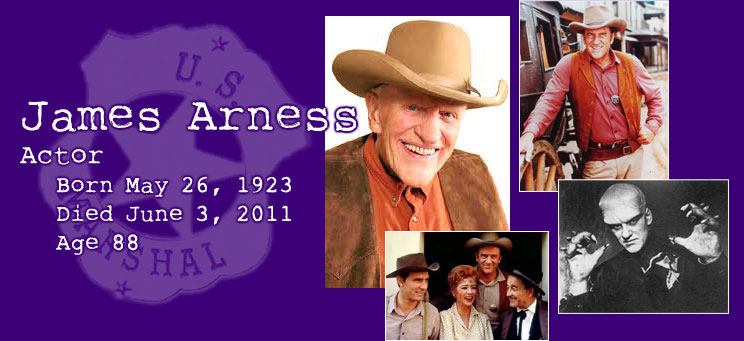 |
||||||||||||||
You want to know how I rewarded Brave Last Dave for writing this fantastic update? I assigned him Peter Falk. I'm mean, but he's great. You'd think I was paying him. * * *
And with this introduction by John Wayne, the radio drama Gunsmoke began its run on TV. William Conrad, possessor of a beautiful voice but short and fat, was the radio Matt Dillon, but on TV they needed a tall leading man type like 6'6" Jim Arness. Wayne said he wished he was on it, but that was farfetched. Honest-to-God movie stars stayed away from the little box for the most part back in the 1950s. The story goes that Wayne told his friend Arness (that part of the introduction was true) he was too tall, and tall leading men like Wayne, Robert Ryan and Jeff Chandler weren't going to like being upstaged by some lanky kid even taller than they were. Gunsmoke lasted 20 years on the air, 635 total episodes. We are so used to the idea now that comedies are half-hour shows and dramas last an hour that it seems a little odd that Gunsmoke was a half-hour show during the early part of its run. After I Love Lucy stopped being the number-one show in the country, Gunsmoke took its place, and TV westerns (which include Bonanza, Wagon Train and Have Gun, Will Travel) dominated the ratings all the way through the 1960s and into the 1970s. If Jim Arness ever got tired of being typecast, I never heard him whine about it. It was not in his nature to whine. He might have made a self-deprecating joke that he was lucky not to have been typecast in monster movies, since his most famous early role was as the alien monster in The Thing from Another World in 1951. He returned to sci-fi monster movies as the heroic FBI agent in Them!, a 1954 movie about an invasion of giant ants, one of the first "big bug" movies. (Arness' brother, Peter Graves, also found himself in several 1950s sci-fi movies, but his career took a more profitable path as well.) James King Aurness was born in Minnesota. His ancestry was Norwegian. He fought at Anzio in World War II, was wounded badly in the leg, and got a medical discharge. It gave him trouble the rest of his life. He didn't whine about it. When Jim got back stateside, his brother Peter recommended he take a radio course. The instructor helped him get a job as an announcer. He lost the "u" in his last name, hitchhiked from Minnesota to Hollywood, and started acting in movies. The right people took notice of him, he did his job, and his one big break turned out to be the golden lottery ticket. After Gunsmoke ended, he was in the 1970s mini-series How the West Was Won. It was a huge success in Europe, where he is better known as Zeb Macahan than he is as Matt Dillon. Kixco, Meadow (first hit of the year, and welcome to the game) and Monarc get six points each in the race to the Moxie — five for age, and one for being part of a trio. — Brave Last Dave |
||||||||||||||
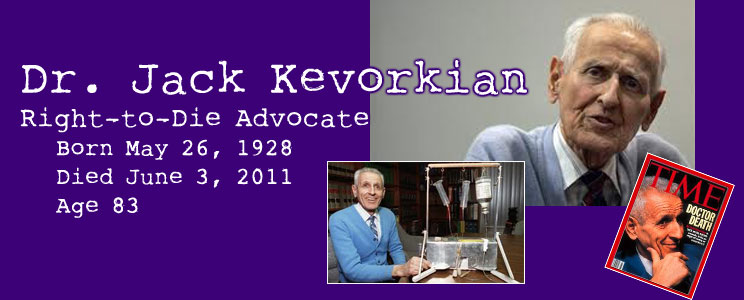 |
||||||||||||||
JD was asked and he delivered before the ink was dry. Or whatever metaphor applies in the digital age. We think it broke a record for update delivery. Fabulous job. * * * I guess I got tapped for this one mainly because I live in Michigan, Jack's home state. And because I'm kind of "into" death, though that's not as narrow a search criterion around here. And maybe because I'm a libertarian by nature. Yeah, a.o. is the only place where I'm a little embarrassed to say it, but I am a libertarian. (It won't take much thought before it dawns on you why I would be embarrassed.) I believe in maximum human freedom even in cases where it becomes unpleasant or frightening or even demonstrably dangerous. We libertarians really, really like the ideas of self-ownership and self-determination. We admire stands on principle, particularly those in which one puts oneself at personal risk. Taking on Leviathan is daunting for anyone, even the most fanatical of True Believers. Well, what's more relevant to self-ownership and self-determination than the decision as to whether one wants to continue to live or not? And that's what Jack Kevorkian was all about. He believed that if you want to end your life due to suffering, you should be helped to do so in as clean and painless a way as possible. He devised several different machines to help his patients accomplish exactly that, and he put two of them into actual practice. One had the rather clever and somewhat disturbing name of Thanatron. (It has been said that Kevorkian trademarked this name, but his attorney, Geoffrey Fieger, denies this.) Kevorkian helped his first patient out in the 1980s and he became an instant sensation. Someone at some media outlet who was confused as to whether he was writing about real life, or a bad TV-movie satire about media idiocies, christened him "Dr. Death," and the name (somehow) stuck. It didn't hurt that Kevorkian looked very much the part, kind of like the love child of Steve Buscemi and the Reaper himself. Leviathan didn't much care for Kevorkian's practice. They took his medical license away almost immediately. Then they went after him for murder, and he was acquitted, since the not-in-dispute facts did not satisfy the elements of Michigan's murder statutes. Then they prosecuted him again. And again. And again. Acquitted, acquitted, mistrial-dismissal. The prosecutor who had been hounding him was removed from office by voters who, reflecting the mood of pretty much everyone, disliked Kevorkian but were unsettled by the idea that he should be jailed for what he was doing. This despite the tactic of switching from the murder statute to the much fuzzier common-law definition of murder, a prosecutorial tactic that had never before been used in Michigan in the 20th Century. (As an aside, I've always wondered why a lawyer as good as Fieger didn't advise his client to pull these stunts in Macomb County, rather than Oakland. Macomb County is about as libertarian an environment as you will find in the United States.) Then Jack got cocky. Kevorkian had always been careful to make sure the patient took the physical action to release the lethal poison into his own system. Every such suicide was taped so that the evidence would be unambiguous. Juries saw the suffering individual and basically took the fact of Kevorkian's ceding of that one bit of control as an excuse simply to nullify the statute. But in 1998, Kevorkian (without discussing it with his attorney beforehand) gave one Thomas Youk (an ALS patient on his last legs) the Full Monty. Youk didn't even touch any apparatus, Kevorkian administered a large dose of KCl directly to Youk's heart, irreversibly interrupting its electrical cycle and causing death immediately. While doing this, he basically taunted prosecutors and dared them to prosecute him for his actions. What Kevorkian either didn't know or chose to pretend not to know is that he had now, on videotape, technically satisfied all the elements of Michigan's murder statute. Fortunately, he had a really excellent trial lawyer in his corner ... ... until he fired the man and chose to represent himself. And not competently. (It didn't help that some of his perfectly legitimate witnesses were rejected by the judge, who had no qualms about railroading a man who was determined to set himself up to be railroaded.) He went to prison for eight years. He had a couple of years of freedom before finally succumbing to his myriad medical problems. He expressed regret about some of his tactics (the decision to represent himself at trial was suboptimal, he would concede), but he never yielded an inch on the core issue he stood for. When I mentioned to my wife (not a fan of Jack's) that I was going to do this update, she said, "Well, make sure you at least identify him as a 'controversial' figure." As if there's any controversy about that. The word "controversial" could have been coined to describe the man. There probably isn't anyone anywhere who really liked and admired him, and I am including those of us who think that what he was doing was, at bottom, just, right and proper. DGH, JD, JTH, Kathi, Mark, The Wiz and Undertaker each get 5 points. — JD |
||||||||||||||
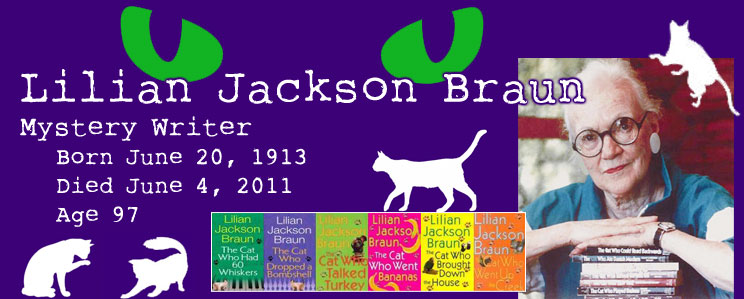 |
||||||||||||||
An excellent and astute recap of Braun's life. I love Charlene for her contributions. * * * There is nothing cozy about the brutal, devastating crime of murder. Why, then, is the cozy mystery genre so popular? Part of the reason, of course, is that mystery fiction is more about justice than violence, and justice fits into the ethos of the cozy mystery — wholesome family values, likable characters, socially misfit criminals, and victims who, more often than not, deserve their fate in some way. Another equally important reason for the genre's current popularity is the legacy of the "Cat Who" series of books by Detroit journalist Lilian Jackson Braun. Braun's entry into the mystery genre wasn't that easy at first, as she had the bad luck to begin her career as a novelist at the exact point in time that Agatha Christie went out of style. Braun always blamed the permissive society of the late 1960s, when readers were more interested in sex, drugs, violence and exploding helicopters than a well-crafted mystery. But Christie's old-fashioned fuddy-duddyness and her reactionary-ism tainted the genre she had created, to the point that even readers who didn't buy into the new permissiveness turned away from cozy mysteries. Braun gave up on mystery fiction, and her three first Cat Who books — which are quite good, I might add — teased mystery readers with what might have been. And then she started writing again. Times had changed, society had for the most part either assimilated or turned against permissiveness, and a new generation of readers who knew Agatha Christie mainly as a historical oddity grabbed ahold of what was to them a brand new genre. (Many of Braun's obituaries credit her for creating the cozy mystery genre, something that should bemuse anyone who's heard of Miss Marple.) Braun's new Cat Who books, set not in Detroit but in fictional Moose County, flew off the shelves, and new books flew from Braun's typewriter like clockwork. Whether Braun cared about her often scathing reviews enough to cry all the way to the bank over them, I don't know. I do know, though, that many American writers writing today in the cozy mystery genre do so because Braun paved the way for them. Lilian Jackson Braun was 97 when she, Jim Qwilleran, Koko and Yum Yum died on June 4. Constant Irritant and I still only get points for one of them: 2 for age, plus 3 for the duet. Total: 5. — Charlene |
||||||||||||||
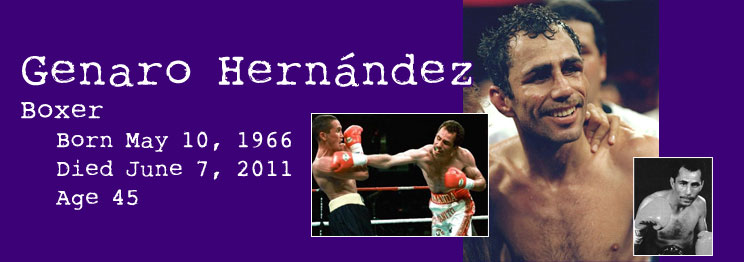 |
||||||||||||||
Our fearless deadpool leader (the one with nine lives) wrote this update, and it's a knockout. * * * "No más." Roberto Durán famously said those words in 1980 — throwing in the towel in a celebrated boxing loss to Sugar Ray Leonard — and he never lived it down. The same words were uttered by Genaro Hernández in the heat of competitive battle, but a lot of sports aficionados either chose to forget or, more likely, never knew about it until Hernández' obituaries came out upon his death on June 7. It was in 1994, for the world lightweight championship, when Hernández decided he wanted no more of it after six rounds against the ultratalented Oscar De La Hoya. Hernández did apologize to his fans for quitting the bout, but added in his own defense, "It is better to say 'no más' than not say another word ever again." (It was learned later that Hernández had already had his nose broken against De La Hoya, and a smashing hit to the face during Round 6 had made him further question his overall health and well-being.) Nicknamed Chicanito ("little Mexican"), Hernández was a tough cookie who fought his way out of the Southland section of Los Angeles, a region often referred to as "La Slums," and paid his dues as he made a name for himself moving up the boxing rankings. He had a strong fan following and was considered one of the more classy men in his sport. After he retired, he became known to watchers of televised fights on HBO Boxing with his broadcasting work and use of on-air CompuBox statistics. Hernández, a two-time world super-featherweight champion, finished his career with an impressive record of 38 victories (17 by knockout), with only 2 losses and 1 draw. Hernández — who is survived by his wife, Liliana, a son, Steven, and a daughter, Amanda — finished the last couple of years of his life in southern California fighting a rare form of cancer called rhabdomyosarcoma, which affected his head and neck. Ouch. When he lost that ultimate fight, he was dead at the youthful, deadpool-bonus-points age of 45. Did his affliction have anything to do with the many blows he sustained in his career as a boxer? We'll never know. But we do know he won't say another word ever again. Put another way, no más. — Morris the Cat
|
||||||||||||||
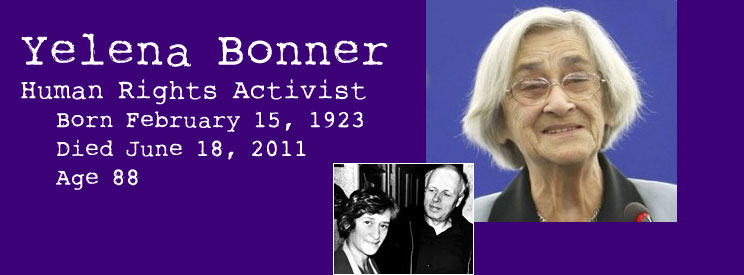 |
||||||||||||||
They met cute. While they were picketing a dissident trial outside Moscow, well-known rights activist Yelena Bonner and the father of the Bomb and Nobel Peace Prize winner, Andrei Sakharov, fell in love. They were the first couple of the movement, with their home the unofficial headquarters of the Soviet dissident movement in the 1970s. It wasn't, as you can imagine, a peaceful existence. Yelena and Andrei suffered constant harassment at the hands of officials. They were brave in a way few of us can imagine being. They lived in constant fear of being arrested. One or the other was often in exile, and yet they never gave up waging war against Soviet authoritarianism. Bonner came by her political leanings honestly. Her father founded the Soviet Armenian Communist Party and was arrested and shot. Her mother was Jewish and everything that meant, and spent decades in the gulag. Both were the victims of Stalin's purges, effectively making Yelena an orphan. During the war, Bonner was sent to the front, suffering eye and chest injuries. She lived the rest of her life with eye and heart problems as a result, and found the medical care she needed outside of the Soviet Union. She was a tough cookie. She and Sakharov had been exiled to Gorky over protesting the Soviet invasion of Afghanistan. But Gorbachev was somewhat interested in reform, and he wanted them back in Moscow. Her husband played along, but Bonner remained steadfast in her criticism of Gorbachev, and when he was awarded the Peace Prize, she asked the committee to remove Sakharov's name from the list of winners. With Sakharov's death in 1989 and the collapse of the Soviet Union, Bonner's star faded somewhat, but she never gave up her fight for human rights, even when she was sick, even after she had moved to Boston to be near her children. She was publishing articles in the Russian press as recently as a few months ago. Pat Peeve knows a dying Soviet dissident when he sees one. He gets 5 points for the hit, and five for this xoroshii solo. Total: 10. — Amelia |
||||||||||||||
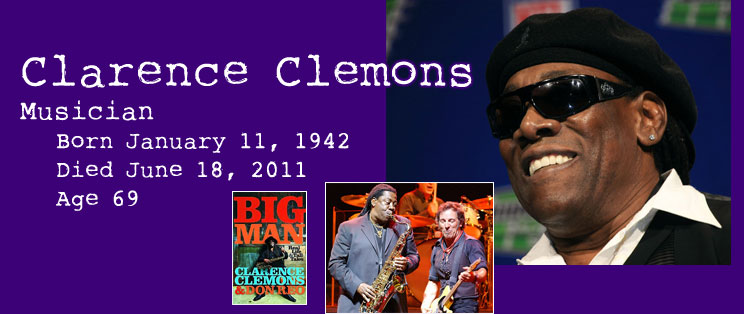 |
||||||||||||||
When I was barely a teenager I fell in love with the sound of a screaming, wailing, get-up-and-stand-on-it saxophone. That would be the sounds made by the great King Curtis. Then, in 1971, King Curtis was murdered on the Upper East Side of Manhattan ... and that sound, for a while, seemed lost — gone forever. Then I heard the E Street Band with Clarence Clemons. Right away I knew "the Big Man" had drawn heavily from the sound of King Curtis ... and Clarence Clemons was almost as good. From "Greetings from Asbury Park, NJ" through "Working on a Dream," I loved Clarence Clemons music. "Tenth Avenue Freeze-Out," "Jungleland," "Thunder Road," "The Ties That Bind," this was a guy who absolutely loved what he did — he was the joy of rock 'n' roll every time he walked onto a stage. Man, he was special. I heard him at the Stone Pony in Asbury Park in the early 1980s. I was walking down the boardwalk in Ocean Grove with one of the ex's, and I hear this tenor coming from behind the arcades a few hundred feet in front of us, and I said to my wife, "That's Clarence Clemons, and he's playing live." We walked over to the Pony and couldn't get in, but we could sit outside for an hour. So we did. I spent many a wasted hour with that woman, but not that one. Here's an interview with Clarence Clemons on meeting Bruce Springsteen. Clarence Clemons died at 69, after suffering a stroke a week earlier. People didn't just love his music, they loved him, too. He was a major part of rock 'n' roll from the time he and Bruce Springsteen formed their partnership. He worked with Jerry Garcia and the Grateful Dead, Ringo Starr and His All-Starr Band, Jackson Browne, Aretha Franklin and many others. One of his obituaries reported, "Lady Gaga's Sax Player Dies." Can you fucking imagine? I knew he was sick, but I just couldn't put the Big Man on my deadpool list. Still, none of those sentimental tears from Born with the Defect. He brought with him the darkness from the edge of town ... and he takes with him eleven points, and for performing his own solo, he gets an extra five. Total: 16. — Bill Schenley
|
||||||||||||||
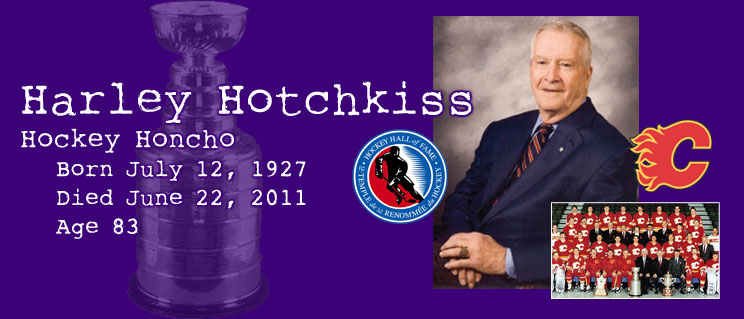 |
||||||||||||||
I love Charlene. Anyone who volunteers to do an update is okay with me, but she volunteered for a Canadian hockey team owner. Bless her heart. * * * Any reader of the Calgary Herald will testify to the rambling idiosyncrasy of its death notices. They go on for columns: litanies of military postings during World War II, pets owned over the previous fifty years, loving descriptions of favourite hobbies, lists of relatives (sometimes down to third cousins), and vague but pious hopes for a glorious future. Minor or indelicate matters may be glossed over; the reader is often left to infer the cause of death from the charity suggested in lieu of flowers, and the deceased's church affiliation may only be clear from the location of the funeral service. But no proper Calgary death notice is complete without a reference to that most essential facet of the deceased's life: his or her hockey affiliation. And in most cases that means, as you might guess, the Calgary Flames. Harley Hotchkiss was the co-owner of the Calgary Flames. Born in southwestern Ontario, he moved to Alberta in the early 1950s and founded his own oil and gas exploration firm, which in the day was pretty much a license to print money. He found a use for that money in 1980 when he (along with a number of other investors) bought the Atlanta Flames and moved them to Calgary. His time as Chairman of the Board of Governors of the NHL was spent mainly in consensus-building and preventing the further hemorrhage of Canadian teams to apathetic U.S. markets; as owner of the Flames, he built a franchise that withstood a series of hellacious financial and public-relations crises in the early 2000s to emerge as one of Canada's most profitable and popular teams. A traditionalist, Hotchkiss was also involved in the development of amateur hockey through his financial support of Hockey Canada. He also (perhaps fittingly) provided foundational funding for the Hotchkiss Brain Institute at the University of Calgary, which is one of the centres studying the effects of repeated concussions on athletes' brain functions. Harley Hotchkiss died on June 22 at the age of 83. His death notice in the Herald was surprisingly short — one of the shortest notices of the day, in fact — but it still mentioned that he loved his Calgary Flames. Can't mess with tradition. Gerard Tierney could steal a hockey team from Atlanta (another fine tradition Hotchkiss started) with the points he's racking up this year. Once again it's a classy solo, with five points for age, five for the solo. Total: 10. — Charlene |
||||||||||||||
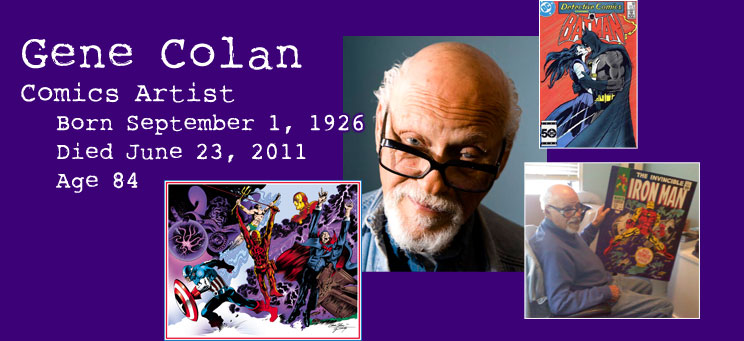 |
||||||||||||||
Brave Last Dave volunteered to write this, and what a collector's item it is. Thanks, Dave. * * * It bothered my mother mightily that I read comic books, certain that they would rot my allegedly clever brain. It didn't occur to me that the people making the comic books I loved were older than my parents. For example, Gene Colan was born in 1926, so he was three years older than my dad and six years older than my mom. After being a soldier in World War II, he started in the comic book business in 1944. He drew everything from romance comics and army stories to superheroes, the genre where I first saw his stuff. The guys who did the artwork for comic books were on a crazy treadmill. Doing the art for one book a month is as much work as writing a daily four-panel comic strip for the newspapers, but most good artists back then did two books or more. From 1968 to 1979, well after he turned 40, Colan was usually the regular artist on two Marvel Comics books every month, except in 1969 (when he drew Daredevil, Doctor Strange and Captain America) and 1976 (when he drew Tomb of Dracula, Doctor Strange and Howard the Duck). It was not until much later that he admitted he was abusing amphetamines to keep up the pace. We should recall he also had to live up to the legacy of guys like Jack Kirby, Bill Everett and Curt Swan, old-schoolers who worked like demons. Two comments about the books I mentioned. Howard the Duck was a remarkable comic book turned into a dreadful movie. You think I'm kidding? There was a villain who was a cross between Dr. Doom and Lester Bangs. You try doing that. And then there's Tomb of Dracula. The Comics Code finally allowed the undead in comics in the 1970s, and Marvel decided to put out a monthly Dracula book. Colan loved doing dark drawings, but the book was promised to Bill Everett. Even though Colan was a well-established artist at the time, he drew audition pages to get the gig, basing his Dracula on the most recent actor to play the part on TV, Jack Palance. Yes, Jack Palance played Dracula. You can look it up. I admit I was a fickle fan when I was young. Colan's work was terrific, especially when teamed with finishing artist Tom Palmer, but younger artists like Jim Steranko, Neal Adams and Barry Windsor-Smith were changing the game. They took draftsmanship and detail to new levels, with artistic influences from Dali, Mucha, Alma-Tadema and Maxfield Parrish. Windsor-Smith took over Doctor Strange from Colan, and the change was astonishing. I didn't just re-read the books, I re-examined panels again and again. Windsor-Smith was then given the Conan the Barbarian book and his stuff, though completely his own style, rivaled even the famous covers of Frank Frazetta on the 1960s reprints of the original 1930s pulp stories. The thing is, Windsor-Smith and Steranko and even Neal Adams didn't quite have the staying power of the older guys and often lasted only a few issues on any title, or they missed a lot of deadlines if they stayed longer. No one could keep up the insane pace of drawing that many pages at that level of quality. There's a quote from A.J. Leibling: "I am better than anyone who is quicker and I am quicker than anyone who is better." That describes Gene Colan and his generation of comic book artists to a tee. Luckily, not all our moms threw out every last issue, and some of the stuff is available in collected works, so young people will be able to appreciate the remarkable work of Gene Colan for many generations to come. — Brave Last Dave
|
||||||||||||||
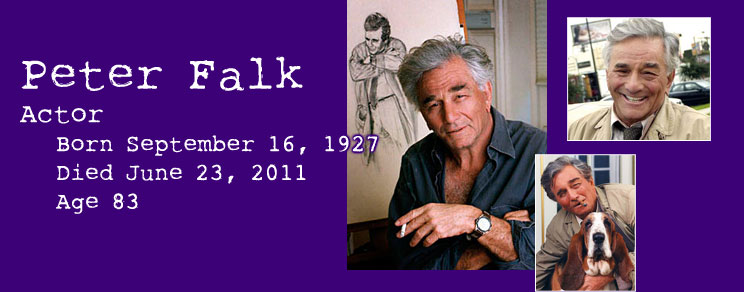 |
||||||||||||||
I'll do the hits before you read this beauty from Brave Last Dave. Allen Kirshner, Allezblancs, Another Lurker, Constant Irritant, DannyB, Dead People Server, Deepstblu, DGH, Direcorbie, Erik, Eternity Tours, Exuma, Jazz Vulture, Jenstrikesagain, JTH, Loki, Mo, Monarc, Ray Arthur and Worm Farmer each get 5 points for the hit. (Mo gets an extra 10. He had a lovely daily double with Gene Colan.) * * * The American tabloids suck at predicting death. I should know. I call myself Brave Last Dave because my list is made up completely of people who were marked for death in 2010 in the supermarket checkout rags. They named 64 names last year, and 58 of them were still alive at year's end. 40 of them comprise my list, and I now have just two hits in the first half of the year: Anne Francis and Elizabeth Taylor. But sometimes they get one remarkably right. A couple years back, they wrote that Michael Jackson would be dead within six months, and that was true. They often say anyone hospitalized is going to die soon, and last year they were right when they said that about Gary Coleman. The big morbid tabloid success of 2011 so far came from the cheaply published National Examiner, saying that Peter Falk was not long for this world. It appeared on the newsstands one week before he died in June. If you accept foreshadowing, you'd assume Peter Falk's life was going to be tragic. He was three years old when he lost his right eye to cancer. But he grew up a normal American kid, played sports and everything. He tells a story about playing baseball in high school and being called out at third base. He was sure he was safe, so he pulled out his glass eye and handed it to the umpire. "Here, try this." He told him. It got a huge laugh. Falk finished high school in 1945, worked at several jobs, got a bachelor's, and trudged along rather aimlessly until 1957, when he tried little theater in Hartford, Ct. He lied his way into Eva La Galienne's acting class for professionals in Westport. He was always late and she asked why. When he told her he drove down from Hartford, she knew there wasn't any work for professional actors there. He confessed he wasn't a professional actor. "Well, you should be," she told him. She gave him a letter of reference to get an agent in New York City, and he was on his way. His first play closed on opening night. His second gig was luckier, playing the bartender in the production of The Iceman Cometh starring Jason Robards. Within the year, he had small roles on TV, then character parts in movies. He was never a leading man, but with supporting roles in big films and successful TV shows, people both in the audience and in the industry knew who he was. He got a shot at being a lead on a TV show in 1965 called The Trials of O'Brien, as a rumpled and divorced lawyer. It lasted 22 episodes. And then came a made-for-TV movie called Prescription: Murder in 1968, where a clever and debonair doctor kills his wife, a crime investigated by an unprepossessing cop named Lt. Columbo. Three years later, Columbo becomes part of the line-up for a rotating set of whodunits called the NBC Mystery Movie that included McMillan & Wife with Rock Hudson and McCloud starring Dennis Weaver. Because the made-for-TV movies were not shooting all the time, Falk had time to be in other projects during the main run of the show. He was in the low-budget films of John Cassavetes, the father of the genre now known as independent film. He made silly comedies written by Neil Simon. Being the star of a long-running TV show may be the toughest typecasting to break in the world, but Falk did break the mold. In 1987, he gave two of his best performances with small roles in The Princess Bride (directed by Rob Reiner) and Wings of Desire, filmed in Germany and directed by Wim Wenders. At the end of The Princess Bride, when Falk says "As you wish" to his grandson (played by Fred Savage), I tear up every time I see it. I'm actually a little misty right now just thinking about it. And then there's his role as Der Filmstar in Wings of Desire, where he plays an American actor in Berlin to work. (No one calls him Peter, but a group of kids passing by in one scene look back at him and one of them says "Columbo!") Bruno Ganz is wonderful in the lead, and Solveig Dommartin is as beautiful as any woman has ever been on film in a hundred years, but when I think of the film, it's Falk's monologue to an angel he knows is there but cannot see that comes to mind first. He's standing by a food truck and says these lines:
— Brave Last Dave |
||||||||||||||
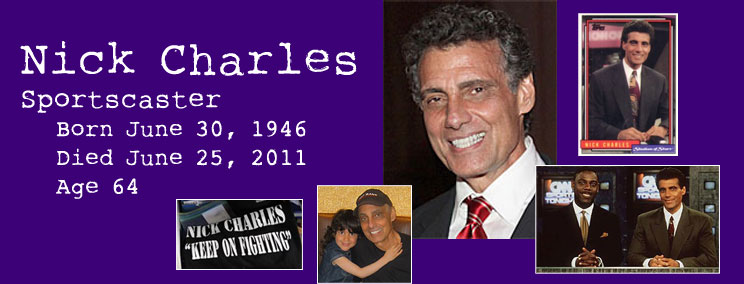 |
||||||||||||||
Nick Charles's first day of work at CNN was CNN's first day on the air. Of course, that means there were a lot of people having first days. Wait. It would have been everyone's first day! So this should be the first sentence of the obituaries of everyone who started the day CNN started. So, back to Nick Charles. He was CNN's first sports anchor. Well, duh. Remember, it was his first day on the first day of CNN. (Well, I'm amused by this.) Seriously, it was many years before sports on the air had the prestige it has now. He'd call people and say this is Nick Charles from CNN, and not only would they not know who he was, they didn't know what CNN was. He prevailed. Charles co-anchored Sports Tonight for 17 years and had his own show on CNN before he left in 2001. His specialty was boxing, with interviews of Muhammed Ali and Mike Tyson under his belt. Nick Charles was half Greek and half Italian, and was named by People magazine as one of the most handsome men in America. Which is about as interesting as the fact that Topps created a bubble gum card with his likeness. This is sports, after all. It can be rather silly. He seemed to be a very nice guy, and he pioneered cable sports reporting. He also provided DDT and Gerard Tierney with a nifty 14 points — 11 plus three for the duet. I'm going to watch Baseball Tonight now. — Amelia |
||||||||||||||
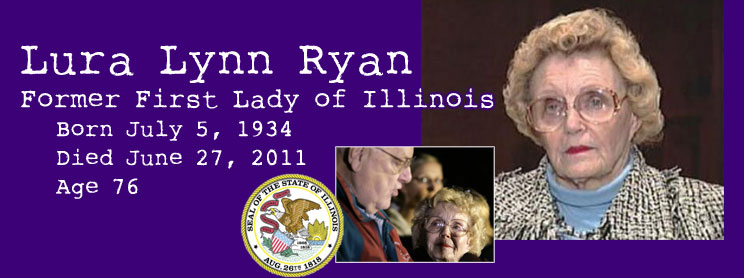 |
||||||||||||||
Lura Lynn Ryan was the wife of the corrupt governor of Illinois, George Ryan. She was the First Lady of Illinois during the period in which he held office and shook down whoever came his way for personal and political gain. He left office and went to jail. He is supposed to stay there until 2013. Lura Lynn Ryan had six children. At one point, five of them were under the age of three. That's right: triplets plus two. She said she spent most of her life then crying in the laundry room. But she survived and moved on. She married a pharmacist and thought she would forever be a pharmacist's wife. But she rolled with the political punches. When her husband was elected governor, she said it plainly and she said it simply: "The first lady should really be a spokesperson for any organization that has a good purpose," she said. "I think I can do that." Which is exactly what she did. She also co-wrote a book called At Home with Illinois Governors: A Social History of the Illinois Executive Mansion, 1855-2003. A real page-turner, I'm sure. But, most importantly, she stood by her man through his years leading the state, his years ripping off the state, and the years the state sent him away to pay for his crimes. And he returned the favor. As she was dying, he begged to be able to see his wife, and a compassionate warden agreed. He stood by her as she died. Lura Lynn Ryan died at 76 on the day another Illinois governor, Rod Blagojevich, was convicted. Buford gets the hit and solo. Total: 13 points — the second time someone has doubled his score with one hit. — Amelia |
||||||||||||||
